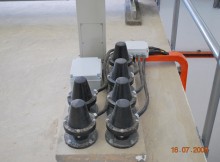Based on their evolution throughout time, supervisory control and data acquisition systems may be classified into four major categories. The earlier systems are referred to as the first, second, and third generations. The fourth generation is the most recent. Let’s take a look at each generation in turn.
SCADA’s First Three Generations First, we’ll go through the first through third generations.
The First Generation
The original SCADA devices were huge independent minicomputers that worked in an isolated environment. There was no such thing as a SCADA network. As a result, each system operated autonomously.
Second Generation
The notion of a dispersed network of SCADA stations was initially presented in the form of the LAN with the second generation of SCADA-based systems (Local Area Network). It connected all of the stations and allowed them to communicate with one another. As a result, the systems may be scaled down, greatly lowering system costs. However, because no common communication protocols were established, this created additional opportunities for security vulnerabilities.
The Third Generation
There were just a few distinctions between the second and third generations. The third generation, for example, switched from proprietary to open systems that used standard communication protocols. This enabled third-party peripherals such as printers and disc drives to be connected to the system. The inclusion of the Internet Protocol (IP) also significantly improved communication between third-generation computers.
What Are the Characteristics of Modern SCADA Systems?
The fourth generation of SCADA-based systems is now available.
Fourth Generation
The progress of earlier generations of SCADA systems was based on advances in the field of information technology. Similarly, with the advent of the idea of the Internet-of-Things (IoT), the SCADA environment is on its way to far higher levels of complexity and speed, enhanced security and scalability, and cheaper prices than ever before.
This is pointing us in the direction of ever more sophisticated wireless SCADA systems. Wireless networks can support high-speed data transfer, thereby increasing the reach of the systems while remaining cost-effective. A wireless network would also avoid the high expenses of constructing analogue transmission lines across vast distances, as well as the danger of such cables degrading or being destroyed.
For more information about Scada Malaysia, please visit www.hydrotrent.com







